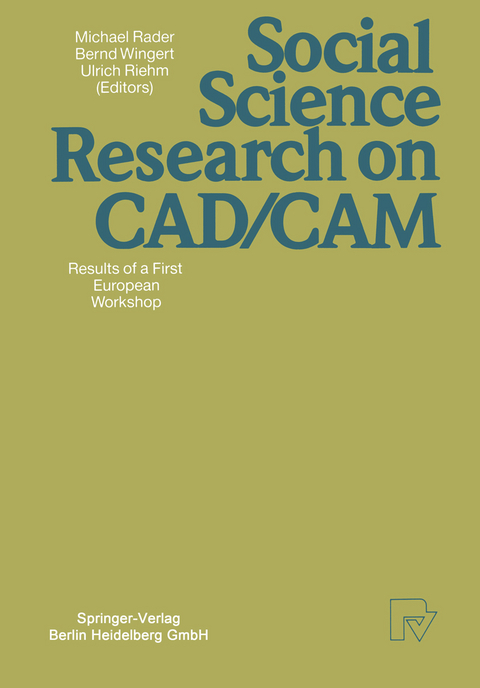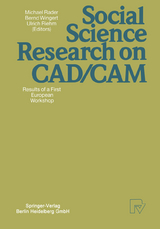Social Science Research on CAD/CAM
Editor's Introduction: A Personal History of the European CAD/CAM Social Studies Network.- 1: National Reviews.- CAD/CAM and Social Science in Scandinavia.- Social Science Research on CAD/CAM in the UK.- Selected Results from German Language Studies in the Social Sciences on the Effects of CAD-Techniques.- CAD Applications in Italy - A Review.- The Hungarian CAD/CAM Scene.- Computer Aided Design in Switzerland.- Notes on Other Countries.- 2: The Nature of Design and the Effects of CAD/CAM.- Tacit Knowledge versus System Knowledge.- Selected Hardware and Software Criteria for a Comfortable CAD System.- CAD as Mental Labour. A Theoretical Approach and Some Practical Consequences.- CAD/CAE: Analysis of Technological Innovation with Special Attention for the Consequences as to the Quantity and Quality of Labour.- Psychosocial Factors in CAD/CAM Research and Development Activities.- 3: Implementation of CAD and Training.- Prior Knowledge and Learning in Computer Aided Tasks.- Management Strategies for the Introduction and Control of Interactive Computer Graphics Systems.- Decision-Making on CAD in Consulting Firms in Denmark.- New Technology in Vocational Training, Models and Regulations.- Conception of CAD/CAM Training for Technical Draughtsmen in a Model Experiment.- 4: Organizational Effects and CAD/CAM Integration.- Alternatives for the Integration of CAD/CAM.- Integrated CAD/CAM Systems and Organizational Latitudes on the Shop-Floor - Initial Findings and Hypotheses.- Taylorism and CAD/CAM. Remarks on the Potential Impact of New Technologies in Design and Production and on a Paradigm Switch in Industrial Sociology.- Organizational Alternatives in the Integration of CAD/CAM.- CAD/CAM Integration: Flexible Manufacturing Systems in the U.K..- The Organizational Impactof CAD in Italian Firms - Main Problems and Key Factors for Success.- CAD in Petro-Chemical Plant Design. The Development of CAD within Different Organizations and their Consequences for the Organization and Task Structure.- 5: The Development of CAD/CAM Systems.- CAD/CAM: Why, When, How? Some Examples in the French Industry.- Social Effects in the Relationship between Users and Suppliers of CAD/CAM Systems in Hungary.- 6: Utilization of Results and Cooperation between the Disciplines.- Utilization of Research Results by the Employees.- How Do We Feed Our Findings Back into the Design Process?.- For a More Comprehensive View of CAD. Some Reflections, Experience, and Questions from a CAD-Consultant, Aware of the Implications of the Technique.- Consequences on the Working Conditions on Site with Increased Use of CAD/CAM in Construction.
| Erscheint lt. Verlag | 26.1.1988 |
|---|---|
| Zusatzinfo | IX, 289 p. |
| Verlagsort | Heidelberg |
| Sprache | englisch |
| Maße | 170 x 244 mm |
| Gewicht | 514 g |
| Themenwelt | Informatik ► Weitere Themen ► CAD-Programme |
| Wirtschaft ► Betriebswirtschaft / Management ► Unternehmensführung / Management | |
| Wirtschaft ► Volkswirtschaftslehre | |
| Schlagworte | CAD/CAM (Computer aided design/manufacturing) • Computer-Aided Design (CAD) • Computer-Aided Engineering (CAE) • Computer-Aided Manufacturing (CAM) • Construction • Model • science and technology • Soziologie |
| ISBN-10 | 3-7908-0392-8 / 3790803928 |
| ISBN-13 | 978-3-7908-0392-1 / 9783790803921 |
| Zustand | Neuware |
| Haben Sie eine Frage zum Produkt? |
aus dem Bereich




